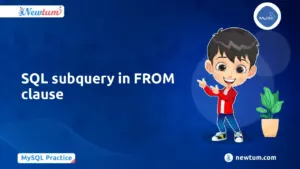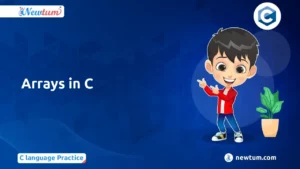Welcome to our blog series on the Odd Even Program in C. Understanding odd and even numbers is fundamental in programming, influencing decision-making in algorithms and game development. Learning to implement this logic in C enhances your coding skills and problem-solving abilities.
What is the Odd-Even Program in C?
In programming, odd and even numbers are categorized based on their divisibility by 2. An even number produces no remainder when divided by 2 (e.g., 4, 6), while an odd number leaves a remainder of 1 (e.g., 3, 5). Implementing this concept in C involves using conditional statements to determine a number’s parity.
Requirements for Odd Even Program in C
To write and run the Odd Even Program in C, ensure you have a C compiler installed, preferably supporting ANSI C standards. Recommended IDEs include Visual Studio, Code::Blocks, or simple text editors like Sublime Text for coding convenience.
Code for Odd Even Program in C
Below given example of Odd Even Program in C will help to better understand the topic:
// Odd even program in C
#include <stdio.h>
int main()
{
int num;
printf("Enter an integer \n");
scanf("%d", &num);
if (num%2 == 0)
printf("Even number\n");
else
printf("Odd number\n");
return 0;
}
Explanation of the Code
- It starts by prompting the user to enter an integer using scanf, which stores the input in the variable num.
- The program then checks the remainder when num is divided by 2 using the modulus operator %. If num % 2 equals 0, the program prints “Even number,” indicating num is divisible by 2 without remainder.
- Otherwise, it prints “Odd number,” indicating num has a remainder of 1 when divided by 2.
- This simple yet effective logic allows the program to categorize integers based on their parity efficiently, demonstrating fundamental usage of conditional statements in C programming.
Output:
Enter an integer 5
Odd numberHandling Edge Cases:
Here’s how to handle edge cases in the Odd Even Program in C:
- Zero:
- Input: 0
- Output: This is an even number.
- Explanation: Zero divided by 2 yields no remainder, classifying it as even.
- Negative Numbers:
- Input: -5
- Output: This is an odd number.
- Explanation: Negative numbers follow the same odd-even rules based on their absolute value.
- Large Numbers:
- Input: 1234567890
- Output: This is an even number.
- Explanation: The program handles large integers efficiently, determining their parity correctly.
Practical Applications of Odd-Even Logic in Programming
The odd-even logic, a fundamental concept in programming, finds diverse applications across several domains:
1. Sorting Algorithms:
- Odd-Even Sort: Derived from the odd-even concept, this sorting algorithm is a variation of bubble sort. It operates by comparing elements in alternating phases: odd-indexed elements with their subsequent neighbors during odd phases, and even-indexed elements during even phases. This approach is particularly useful in parallel computing environments where sorting can be executed concurrently on different segments of data.
2. Game Development:
- Turn-Based Games: In games involving alternating turns, the odd-even logic determines which player takes the next action. For instance, it can be used to cycle between players in a turn-based strategy game, ensuring fair and systematic gameplay mechanics.
3. Control Systems and Simulations:
- Cycle Management: In control systems and simulations, such as traffic light management or industrial processes, odd-even logic can be applied to manage cycles or phases of operations. For example, traffic lights may switch between red and green lights based on odd or even cycles, optimizing traffic flow efficiency.
4. Mathematical Computations:
- Number Analysis: Odd-even logic is integral to various mathematical computations and analyses. It helps in segmenting data sets or executing specific operations based on the parity of numbers involved. This capability is crucial in statistical analyses, data processing, and algorithmic designs.
5. Educational Tools and Learning Environments:
- Teaching Programming: The odd-even program serves as a foundational example in educational settings for teaching basic programming concepts. It introduces learners to conditional statements and logical operations in a straightforward manner, fostering a deeper understanding of computational thinking and problem-solving skills.
Comparison with Python Implementation
Implementing the Odd Even Program in Python and C showcases similarities and differences rooted in their respective language features and performance considerations.
Similarities: Both Python and C use the modulus operator (%) to determine if a number is odd or even. They employ conditional statements (if-else) for decision-making based on the result of the modulus operation. Both languages handle basic arithmetic operations efficiently, making them suitable for implementing the odd-even logic.
Differences:
- Syntax and Structure: Python’s syntax is more concise and readable compared to C, which requires explicit declaration of data types and syntax rules like semicolons and braces.
- Performance: C typically offers faster execution times compared to Python due to its lower-level nature and direct hardware access. Python, being an interpreted language, may have higher overheads in certain computational tasks.
- Flexibility and Ease of Use: Python is renowned for its ease of use and rapid development capabilities, while C provides more control over memory management and system-level operations.
- Portability: Python programs are generally more portable across different platforms and systems due to its interpreted nature, whereas C programs may require recompilation for different platforms.
In conclusion, this blog has explored the fundamentals of the Odd Even Program in C, emphasizing its significance in programming logic and decision-making. Experimentation is key to mastering these concepts, offering hands-on learning opportunities. Visit Newtum for comprehensive resources on various programming languages like Java, HTML, and C, designed for learners of all levels. Happy coding!



